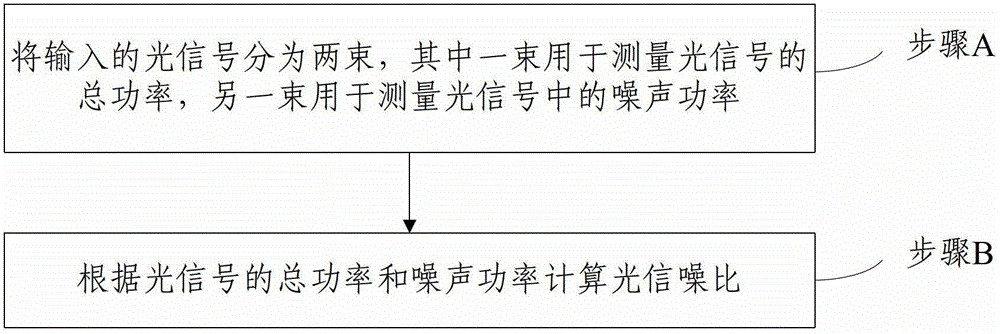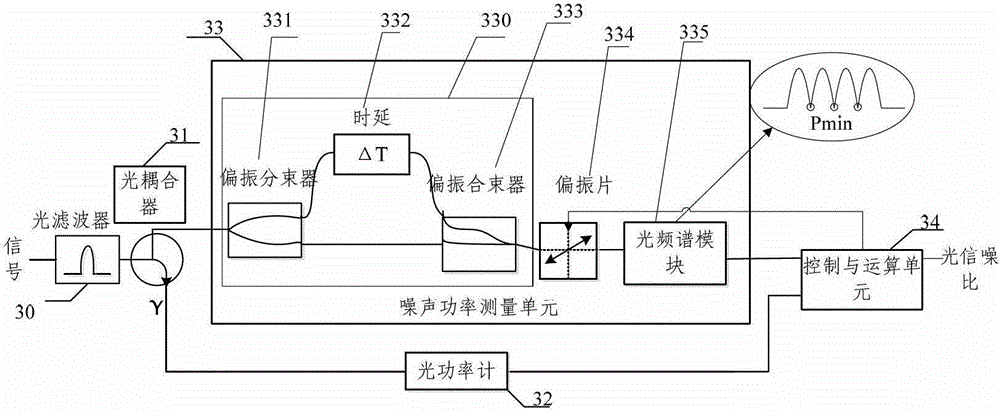Polarization interference-based in-band optical signal-to-noise ratio detection method and device
A technology of optical signal-to-noise ratio and detection method, which is applied in the field of optical communication, can solve the problems of no longer flat noise spectrum, high difficulty, and high coherence of signal light, and achieve the effect of transparent signal modulation format and transmission rate
- Summary
- Abstract
- Description
- Claims
- Application Information
AI Technical Summary
Problems solved by technology
Method used
Image
Examples
Embodiment 1
[0038] Embodiment 1 of the present invention provides an in-band optical signal-to-noise ratio detection method based on polarization interference, and the steps are as follows figure 1 As shown, it specifically includes the following steps:
[0039] Step A: Divide the input optical signal into two beams, one of which is used to measure the total power of the optical signal, and the other beam is used to measure the noise power in the optical signal.
[0040] Before dividing the input optical signal into two beams, filtering the optical signal is also included. The filtered optical signal passes through a coupler with a splitting ratio of γ to split the signal into two beams.
[0041] Step A measures the noise power in the optical signal. The specific process is as follows: figure 2 shown, including the following steps:
[0042] Step A1: performing polarization beam splitting on the optical signal used for measuring the noise power in the optical signal to obtain two branc...
Embodiment 2
[0052] In order to achieve the above purpose, Embodiment 2 of the present invention also provides an in-band optical signal-to-noise ratio detection device based on polarization interference, the schematic diagram of which is shown in image 3 shown, including:
[0053] An optical coupler 31 , an optical power measurement unit 32 , a noise power measurement unit 33 and a control and calculation unit 34 .
[0054] An in-band optical signal-to-noise ratio detection device based on polarization interference provided in this embodiment further includes an optical filter 30, and the optical signal is filtered by the optical filter before entering the optical coupler.
[0055] The optical coupler 31 divides the input optical signal into two beams, one beam is input to the optical power measurement unit 32 , and the other beam is input to the noise power measurement unit 33 .
PUM
 Login to View More
Login to View More Abstract
Description
Claims
Application Information
 Login to View More
Login to View More - R&D
- Intellectual Property
- Life Sciences
- Materials
- Tech Scout
- Unparalleled Data Quality
- Higher Quality Content
- 60% Fewer Hallucinations
Browse by: Latest US Patents, China's latest patents, Technical Efficacy Thesaurus, Application Domain, Technology Topic, Popular Technical Reports.
© 2025 PatSnap. All rights reserved.Legal|Privacy policy|Modern Slavery Act Transparency Statement|Sitemap|About US| Contact US: help@patsnap.com



